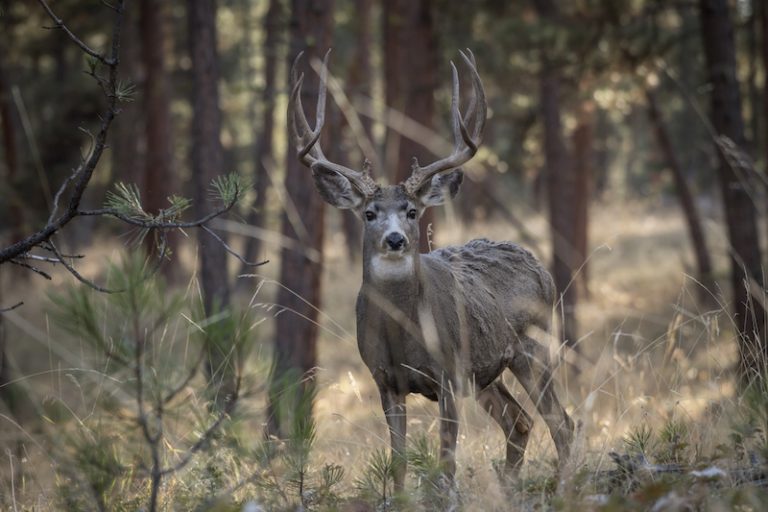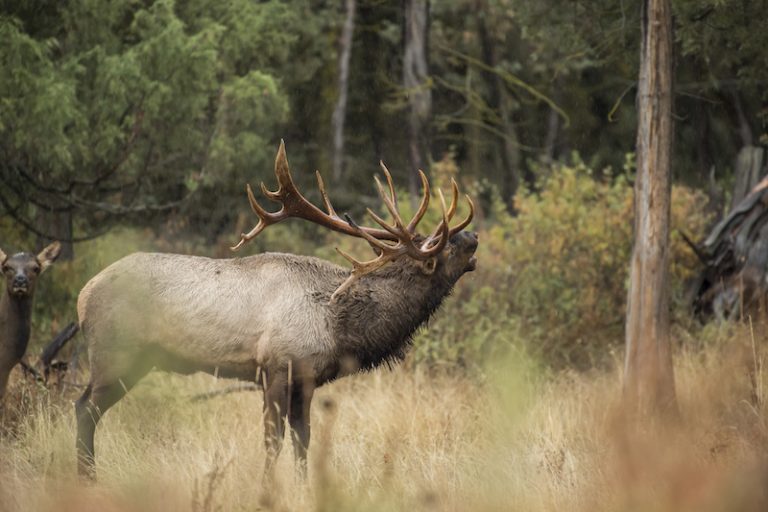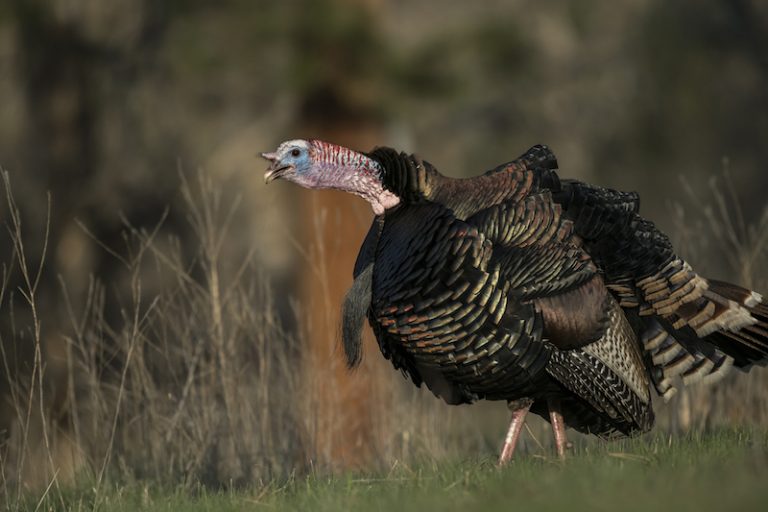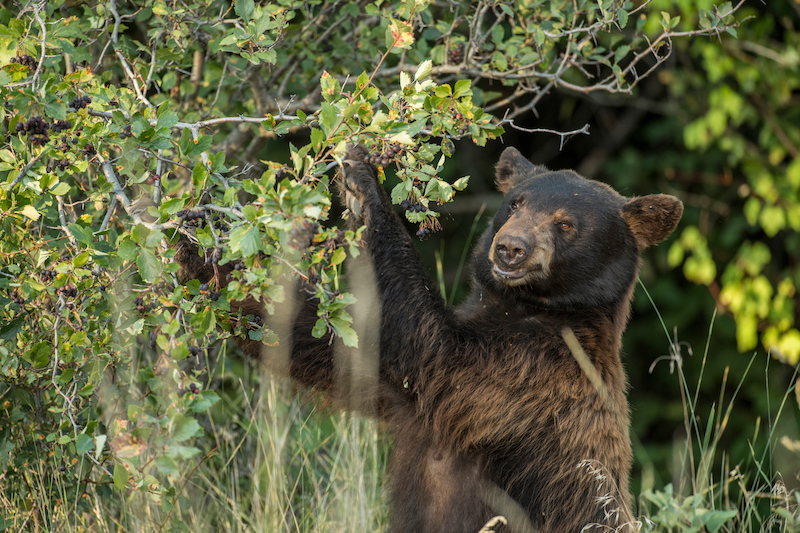R3
State-by-State Hunting Data
Harvest and license-sales data from state wildlife agencies can help hunters see trends, make plans and increase their odds of success.
Photo Credit: ATA
Hunters bought over 15.6 million hunting licenses in 2018, according to U.S. Fish and Wildlife Service national hunting license data. The F&WS collects this information annually from every state and U.S. territory.
Texas sold the most licenses, over 1 million; and Rhode Island sold the fewest, around 8,000. Those numbers represent individual hunters in each state, but many hunters buy licenses in several states. The numbers don’t include hunters who get free licenses, such as landowners, youths or seniors. License requirements vary. Some states require anglers or boat registrants to buy a hunting license as part of their purchase, so specifying the number of active hunters isn’t always possible.

Deer are the most popular big game to hunt. Photo Credit: John Hafner
Of the nation’s many hunters, 80 percent chase big game, according to the 2016 National Survey of Fishing, Hunting and Wildlife-Associated Recreation. Deer are the most popular game animal, according to the survey, which found that over 8.1 million people hunt deer annually. Wild turkeys were the next most popular game, with 2 million hunters; followed by elk and bear.
Harvest reports and license sales provide each state’s data. This information helps wildlife agencies track trends and set management policies. States often collect the data differently, but it’s done most commonly with surveys, check stations, and voluntary or mandatory reporting. Even states with mandatory reporting use scientific estimates to determine or double-check harvest data.
Harvest rates can also help customers plan their hunts. Publicly accessible data varies by state, but provides insight into hunting areas, success rates, animal maturity, hunting pressure and tag-draw odds. Some states also compile archery-specific information.
Let’s review state-by-state harvest statistics and links to more hunting data. This includes the latest information available as of March 2019. We rounded numbers to the nearest hundred or thousand.
Hunters bought 548,000 licenses in 2018. Alabama’s deer and turkey hunters must report their harvests within 48 hours of each kill.
Deer-harvest statistics for 2018/2019, as of March, show 84,000 deer, of which 49,000 were bucks. Turkey-harvest statistics for 2018/2019, as of March, show 1,300 birds, of which 120 were jakes. These data show the county results.
Hunters bought 109,000 licenses. Moose are the state’s most sought big-game animal. Alaska requires hunters to report all big game harvests. In 2017, 21,000 hunters had general moose tags, and their success rate was 23%. Meanwhile, 2,500 people hunted caribou with a general tag, and 44% were successful.
Hunters bought 305,000 licenses. You can view survey data here for 2017.
Hunters bought 327,000 licenses in 2018, and harvested 120,000 deer. The harvest data are detailed by zone, date and county. Arkansas hunters killed 8,300 turkeys last year. Online and telephone reporting provide daily harvest data during the season.
Hunters bought 281,000 licenses in 2018. California issued 175,000 deer tags in 2017, and hunters harvested an estimated 29,000 deer. Hunters must report whether they harvest a deer. California’s data break down deer harvests by sex, zone, buck size and more.

Elk are also popular big game in mountainous areas. Photo Credit: John Hafner
The state’s Parks & Wildlife agency sold about 342,000 elk, deer and pronghorn licenses in 2017. CWP collects hunters’ voluntary harvest reports, and estimated 84,000 hunters killed 38,000 deer. That number includes about 12,000 bowhunters who registered 3,000 deer.
Roughly 223,000 Colorado hunters harvested 39,000 elk in 2017, a 17% success rate. Of the elk harvested, 21,000 were bulls. About 48,000 of the hunters were archers, who took 5,500 elk.
Colorado estimated that over 16,000 hunters pursued turkeys in Spring 2017, an increase of nearly 250% since 1999. They harvested 5,600 turkeys.
Hunters bought 37,000 license permits in 2018. The Connecticut Department of Energy & Environmental Protection reports 11,000 deer killed in 2018, including 5,000 by bowhunters. Connecticut’s 2017 spring turkey harvest was 1,600, and 56 more fell during the 26-day fall hunt. Connecticut hunters must report turkey and deer harvests within 24 hours.
Hunters set a harvest-rate record during 2016-2017 with15,000 deer; of which 51% were antlerless and 49% were antlered bucks. Hunters must report deer harvests within 24 hours.
The Florida Fish and Wildlife Conservation Commission provides a detailed breakdown of harvest numbers on its website. You can search by season, region, hunt identification number and more. The data are available for deer, hogs and turkeys.
Georgia had the nation’s sixth highest number of license holders in 2018 with 652,000. The Department of Natural Resources has an interactive map with deer harvest numbers reported through mandatory check-ins. For 2018-2019, hunters checked in 89,000 bucks and 86,00 antlerless deer. The DNR estimated the state’s deer harvest at 381,629 for the 2017-2018 season. Resident turkey hunters bought 45,000 licenses in 2018, and harvested 17,000 turkeys.
About 11,000 people bought Hawaiian hunting licenses last year. All the major islands have huntable big game, including axis deer, feral pigs ad mouflon sheep. Hawaii’s Division of Forestry and Wildlife maintains detailed lists of species on each island.
Hunters took more mule deer and fewer white-tailed deer in 2018 than in 2017, while the elk harvest was average, according to harvest data from the Idaho Department of Fish and Game. All hunters who buy big-game tags must report their hunt’s results, whether they hunted or harvested an animal.
Hunters harvested 22,000 elk, a 24% success rate. They also harvested 27,000 mule deer, with a 31% success rate; and 25,000 whitetails, a 42% success rate. IDFG’s website provides detailed data about archery success rates and unit data.
Hunters bought 552,000 deer permits for the 2017/2018 season, and enjoyed 106 hunting days in which they took 148,000 deer. The Illinois DNR issued 209,000 archery-deer permits to hunters, of which 10% were nonresidents.
Roughly 69% of bowhunters used compound bows, while 30% used crossbows and 1% used traditional bows. Crossbow use rose dramatically after legislation removed restrictions. The DNR treats crossbows as just another bow during archery season. Illinois hunters also harvested 16,000 turkeys in Spring 2017.
Hunters took 114,000 whitetails during the 2017 season and 111,000 during the 2018 season. Hunters must report their kills within 48 hours.
The Iowa DNR sold 340,000 white-tailed deer licenses for 2017. Of those licenses, 89,000 were for bowhunting. Iowa’s 2017 Trends Logbook shows hunters harvested 106,000 whitetails. Iowa’s hunters also registered 12,000 turkeys during the Spring 2017 season, and bought 49,000. Hunters must report deer and turkey harvests.
The Kansas Department of Wildlife, Parks and Tourism sold 183,000 deer permits for the 2017-2018 deer season, which marked its third straight year of declining sales. Hunters took 80,000 deer, which was also down a third consecutive year. The DWPT also includes hunters' comments in its season reviews.
Hunters harvested146,000 deer during 2018 seasons, 54 percent bucks and 46 percent antlerless, according to the Department of Fish & Wildlife Resources. Kentucky requires hunters to report their harvests. The agency also reported 18,000 of its deer harvest was taken with regular archery equipment and 4,700 with crossbows.
Hunters also took 27,000 turkeys during the 2018 spring season. Archers took about 260 of the birds, and crossbow hunters took 100. The 2018 fall harvest produced 2,400 turkeys.
The Department of Wildlife and Fisheries issued 279,000 deer tags for the 2017-2018 season, and hunters took an estimated 135,000 whitetails. Hunters must report their harvests within 72 hours. Archers tallied 6,300 of the harvest, and crossbow hunters 3,100.
Hunters took 32,000 deer during the 2018-hunting season, the state’s highest harvest since 2002. That’s an 18% increase from 2017. The harvest included 18,000 bucks, most of which fell to firearms hunters. Archers took 2,100 deer, and residents accounted for 93% of the harvest.
Maine also reported harvests of 1,900 moose and 2,900 bears for the 2017 seasons. The state issued 2,500 moose permits. Hunters must register their harvests.

Turkeys hold the number two spot for most hunted animal. Photo credit: John Hafner
The Maryland DNR reported 87,000 deer taken during the 2017-2018 season, which included 30,000 antlered and 53,00 antlerless whitetails, and 1,400 antlered and 1,700 antlerless sika deer. Of the 11,000-plus hunters pursuing turkeys in the Spring 2018 season, 3,800 bagged a bird. Hunters must register deer and turkeys within 24 hours.
The F&WS reported 58,000 paid hunting-license holders in 2018, and the Massachusetts Division of Fisheries and Wildlife reported a record 15,000 deer harvested during 2018 seasons. Archers harvested 5,200 of the deer. Hunters must report their harvests within 48 hours. Hunters registered 3,000 turkeys during Spring 2018.
The DNR estimated 574,000 hunters spent 8.7 million days afield during the 2017 deer season, and harvested 376,000 deer for a nearly 50% success rate. About 206,00 hunters used a crossbow and harvested 93,000 deer. About 74,000 hunters participated in the state’s 2017 spring turkey season, and killed 33,000 birds.
The DNR sold 368,00 resident deer licenses for the 2017 gun season and 13,000 nonresident licenses. For archery hunting, Minnesota sold 92,000 resident and 2,000 nonresident licenses. Hunters harvested 198,000 deer in 2017, including 21,000 with archery equipment. Hunters must register their deer kills. The DNR also surveys bowhunters about their experiences.
The DNR issued 39,000 permits for the 2017 spring turkey season, and hunters registered about 12,000 birds.
The state had 300,000 hunting-license holders in 2018, according to F&WS records. The Mississippi Wildlife, Fisheries & Parks agency estimated the 2017-18 deer harvest to be 195,000, one of its lowest. Mississippi requires hunters to report their harvests.
Hunters killed about 290,000 deer in 2018, according to the Missouri Department of Conservation, of which 137,00 were bucks. Bowhunters registered 53,000 deer during their 2018 season. Click here for the archery season’s top counties.
Hunters also took 36,000 turkeys during the 2018 spring season. Deer and turkey kills must be telechecked by 10 p.m. the day they’re killed.
Montana was home to 253,000 paid hunting-license holders in 2018, according to the F&WS. The Montana Fish, Wildlife & Parks Department reports152,000 hunters chased mule deer in 2017 and killed about 56,000, of which 43,000 were bucks and 1,600 were bow-kills. Further, 152,000 hunters harvested 49,000 whitetails in 2017 season, of which 30,000 were bucks and 3,5000 were bow-kills.
Montana had 114,000 elk hunters in 2017, and they harvested 30,000 elk, including 3,700 with a bow. The MFWP uses annual telephone surveys to gather harvest data.
Hunters took 48,000 deer in 2018, about 2,000 fewer than in 2017, according to the Nebraska Game and Parks agency. The harvest included 8,600 mule deer bucks, the second highest on record; and 27,000 white-tailed bucks.
The Department of Wildlife’s website provides harvest data for all 2018 big-game seasons. The data is available on a PDF file, and in an Excel spreadsheet searchable by residency, hunt area, draw odds, success rates and more.
Hunters harvested 14,000 deer in 2018, a 14% increase from 2017 and 26% above the 20-year average, according to the Fish and Game Department. That’s the state’s highest harvest the past nine years and second highest on record (since 1922).
The agency also estimated 4,500 turkeys were shot during the 2017 spring season; and 587 bears killed during the 2017 season, a 23% decrease from the previous five-year average.
Hunters killed 49,000 white-tailed deer during the 2017-2018 season, the New Jersey Division of Fish and Wildlife reported. About 14,000 were taken by archers.
The New Mexico Game and Fish Department sold 37,000 elk licenses, according to its 2017-2018 Elk Harvest Report. Hunters killed 8,300 bull elk and 6,000 cows. The summary reported a 26% success rate for archers.
Hunters bought 36,000 deer licenses, according to the 2017-2018 Deer Harvest Report, and killed 11,000 bucks. Meanwhile, the 2017 Turkey Harvest Report estimates 8,700 hunters participated in the spring hunt and shot 3,300 birds.
Hunters bought 579,000 licenses in 2018, according to the F&WS. New York’s Department of Environmental Conservation reports hunters harvested 203,000 whitetails in 2017, including 44,000 with a bow. Hunters also killed 1,300 black bears, including 350 with a bow, according to the 2018 Black Bear Harvest Summary. Hunters killed 19,000 turkeys during the 2018 spring season. Hunters must report deer and turkey harvests within seven days.
The North Carolina Wildlife Resource Commission reported the state had 665,000 license holdersduring the 2017-2018 hunting season. The state had 235,000 deer hunters, and they harvested 190,000 deer. The state also had 69,000 turkey hunters, of which 27,000 were successful. The state provides harvest estimates in real time throughout hunting season. Hunters must report their deer, bear and turkey harvests.
Hunter took 49,000 deer during the state’s 2017 season, according to the North Dakota Game and Fish Department. The success rate was 66% on white-tailed deer bucks and 83% for mule deer bucks. The agency sold a record 26,000 resident and 2,300 nonresident archery licenses in 2017, and bowhunters had a 39% success rate.
Ohio had 390,000 paid hunting-license holders in 2018, according to the F&WS. Ohio landowners who hunt their own lands do not need hunting licenses or permits. The Ohio DNR reported 172,000 deer kills during the 2018-2019 season, with bowhunters arrowing 38,000 bucks and 42,000 antlerless deer. Hunters must report deer and turkey harvests. Ohio issued 64,000 permits for the 2018 spring season, and hunters killed 23,000 birds, the state’s third highest spring harvest.
The Department of Wildlife Conservation reports the 2017-2018 archery season was the best in state history for trophies and harvest numbers. Bowhunters harvested a record 29,000 deer during the 16-week season, and enjoyed a 30% success rate. Roughly 98,000 hunters took 108,000 deer during the 2017-2018 season. Hunters must report their harvests.
The Department of Fish & Wildlife estimates 32,0000 bowhunters participated in 2017’s deer hunting season. They arrowed 4,000 bucks and 400 antlerless deer. The agency estimates 30,000 bowhunters harvested 3,000 bull elk, and about 1,000 spikes and antlerless elk in 2017. Every hunter who bought a deer, elk or turkey tag must file a report.
The state had 976,000 paid license-buying hunters in 2018, according to the F&WS, making it No. 2 in the nation for licensed hunters. They harvested 375,000 deer during the 2018-19 hunting season, according to the Pennsylvania Game Commission. That’s the best harvest in almost 15 years. Bowhunters generated a third of the state’s deer harvest. For the 2017 spring and fall turkey seasons hunters harvested 47,000 birds. Hunters must report deer and turkey harvests.
The state’s 8,200 paid hunting-license holders in 2018 constitute the nation’s smallest state contingent, according to the F&WS. These hunters took 1,900 deer in 2017-2018,with residents harvesting 1,700 and nonresidents 200. Archers took about 400 of the deer. Hunters also took 120 turkeys during the 2016 spring season. Hunters must report their harvests.
Hunters harvested 185,000 deer during the state’s 2017 season, according to the DNR. Deer hunters’ success rates were 69% for residents and 70% for nonresidents, probably because many nonresidents use guides. Archers produced 7 percent of the deer kill. Hunters also harvested 18,000 turkeys during the 2018 spring season.
The Game, Fish & Parks Department issued 95,000 resident deer licenses and 8,000 nonresident deer licenses in 2017. The agency projected a harvest of 52,000, including 28,000 white-tailed bucks and 6,000 mule deer bucks. It also estimated that bowhunters took 4,800 white-tailed bucks and 1,000 mule deer bucks. The agency surveys hunters after the season to calculate big-game harvests, and also encourages online feedback.

The Wildlife Resources Agency compiles data that’s searchable online by date for deer, bear, turkeys and sandhill cranes. You can narrow your searches by county, weapon, season and more.
Texas had over 1 million paid hunting-license holders during 2018, according to the F&WS, a total that’s No. 1 in the nation. The Texas Parks & Wildlife Department estimates hunters harvest 430,000 to 500,000 whitetails annually, which is also No. 1 in the country.
TPW estimates hunters killed 838,000 whitetails during the 2017-2018 season. The agency also reports hunters killed about 44,000 mule deer and 51,000 javelina.
The Utah Division of Wildlife Resources provides harvest data by hunt number and unit number, along with details about permits, hunters afield, success rates and hunter satisfaction. You can view data for all big-game species here.
The Fish & WildlifeDepartment reports hunters harvested 16,000 deer during the state’s four 2017 seasons. That harvest was 13% higher than the previous three-year average, and the buck kill was 8% higher. Bowhunters arrowed 3,600 deer during the split 37-day season. Vermont hunters must bring their deer, bear or turkeys to a reporting station within 48 hours.
The Department of Game and Inland Fisheries reports hunters harvested 191,000 deer during 2018-2019 seasons, of which 96,000 were antlered bucks. Archers took 27,000 deer, with crossbow hunters taking more deer than did recurve and compound shooters for the first time since crossbows became legal in 2005. All hunters must register their deer.
The state estimates hunters took 16,000 turkeys during the 2018 spring season, and 2,400 more during autumn’s 2018-2019 season. Hunters must report all turkey harvests.
The Department of Fish & Wildlife estimates hunters killed 27,000 deer, with 4,400 taken by bowhunters, according to its 2017 Game Harvest Report. The report estimates hunters killed 5,500 elk, of which 1,800 were taken by archers. Washington requires hunters to report their big-game harvests.
The Division of Natural Resources estimates hunters bagged 108,000 whitetails in 2017, which was 4% below 2016’s totals. Archers arrowed roughly 26,000 deer with bows and crossbows. Hunters also killed about 12,000 gobblers in Spring 2017, a 15-year high.
The DNR reported a deer kill of at least 336,000 in 2018. Bowhunters using regular archery gear killed over 45,000 deer, and crossbow hunters registered over 47,000. Hunters registered nearly 39,000 turkeys during the 2018 spring hunt. Hunters must report deer and turkey kills.
The Game & Fish Department’s 2017 harvest reports show 45,000 hunters chased pronghorns and bagged 42,000, a 94% success rate. In addition, 50,000 licensed mule-deer hunters harvested 27,000 deer; 29,000 whitetail hunters killed 18,000; and 57,000 elk hunters harvested 25,000.

WE ARE HERE TO HELP THE INDUSTRY, TO HELP INDIVIDUAL BUSINESSES GET THE MOST OUT OF THE INDUSTRY, AND TO HELP YOU.